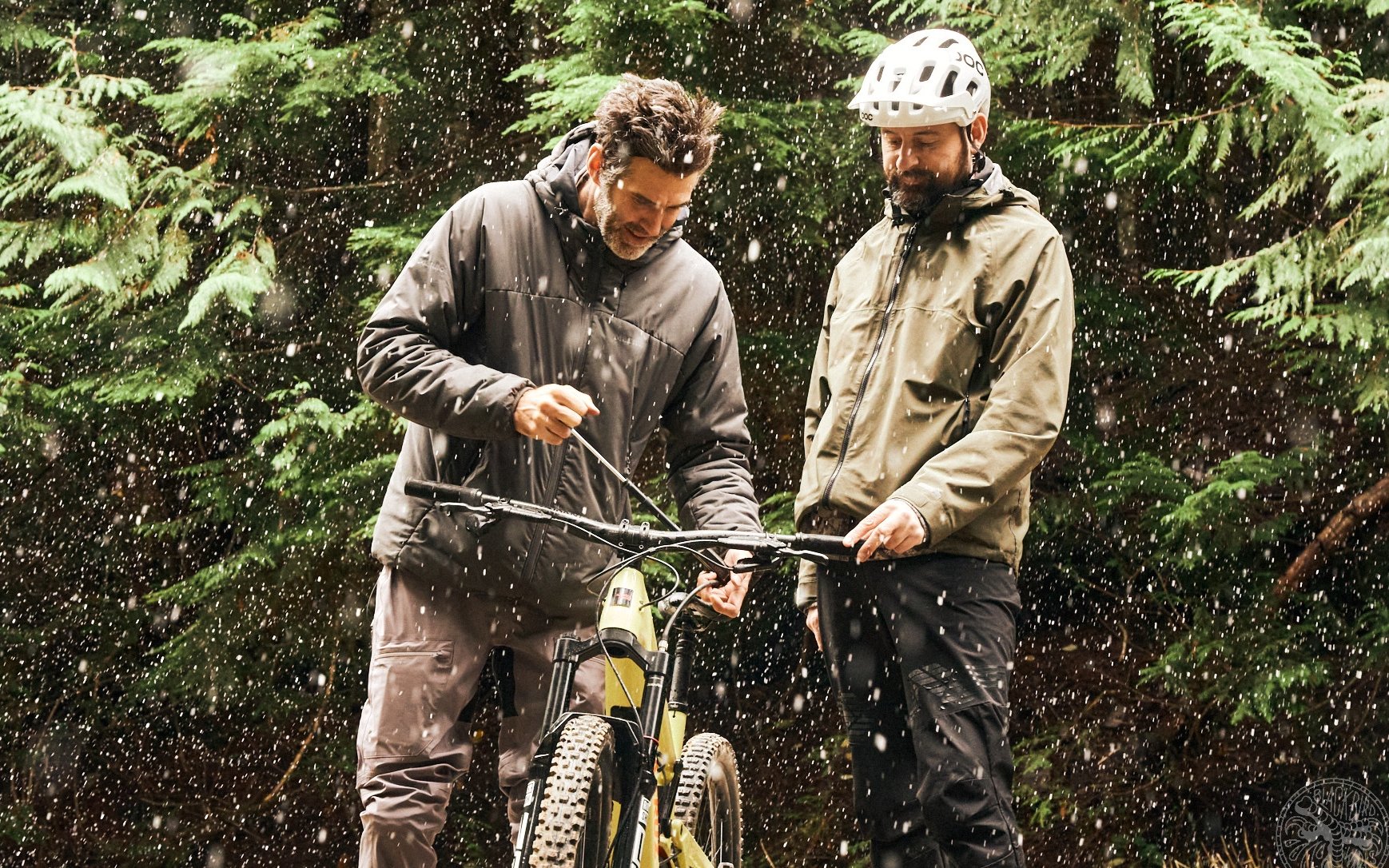
Uncle Dave
Uncle Dave Blind Tests Buttercups
There’s a saying that we have in my house. “Stop being such a Hungarian.” We trot this out when somebody interprets a passing mention of a subject as a deep interest. The phrase originates in Hungary, of all places, from all of the times that we have visited our relatives there. These trips generally incorporate:
- A lot of people asking “what did they just say?”
- Lots and lots of elaborate deserts
- Driving places, stopping, listening to people talk in Hungarian while they point at something, then climbing back into your car and asking “what were we just looking at and why?”
Confusion reigns, really.
Now, back to the subject at hand, I find that if I’m ever to mention a subject or ask a question, my Hungarian relatives will assume that I must be super interested and that I must immediately have/visit the thing I’ve asked about. In their mind, there would be no reason to ask a question about something short of a burning desire. They’re a very literal group, short on nuance (my relatives...not necessarily all Hungarians). Ask about the dessert wine that the region you just drove through is known for? Why, here’s several bottles that we procured from god knows where as our village only has a store that opens for a few hours a day and sells soda water, cigarettes and watermelon. Ask about the status of the national football team? Well here’s a strange hat, emblazoned with a soccer ball and “HUNGARY!!!” Whatever you do, do not let these people know that you have a favourite food.
Right now, it sort of feels like this is happening with this Buttercup thing. Ya, I wrote about Buttercups. Does that mean I’m actually interested in what they are or what they do? Well, no, not really. It feels like perhaps somebody may have missed the point. Is it me? Is it them? I’m not really sure. But here we are, many months and e-mails later. I’ve run out of excuses and I guess I have no choice but to ride around in the rain and determine if Buttercups make a difference in a fork.
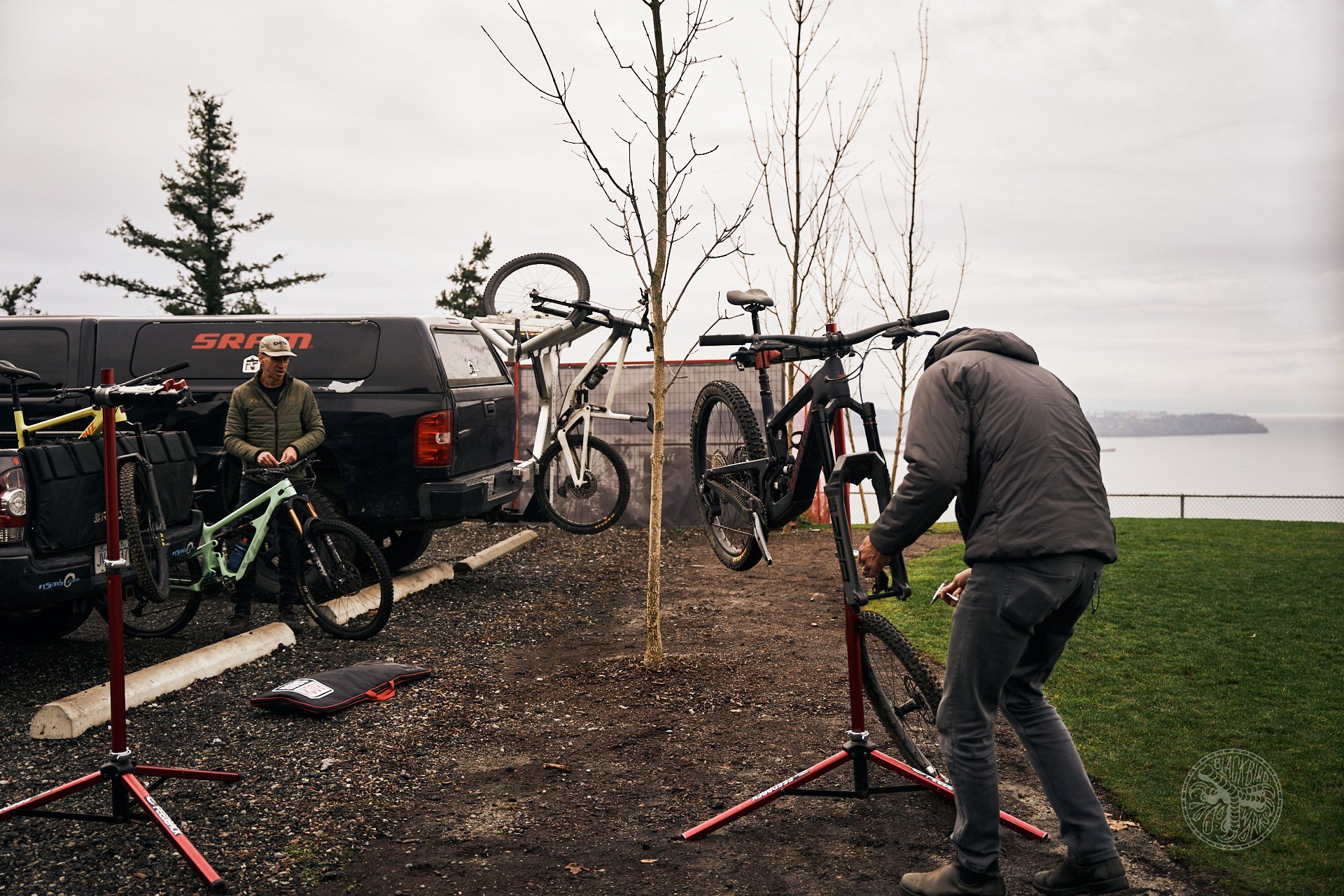
We chose to do multiple laps on Cypress, repeating Jersey Shore.
Baseline
The baseline for the test was a pair of identical Santa Cruz Nomads, save for frame colour and the fork internals. One blue, one yellow. One fork was a stock Zeb Ultimate, complete with the aforementioned Buttercups, and the other a non stock Zeb Ultimate, complete with all of the bells and whistles save for a dummy block in place of the Buttercups.
I picked one of the bikes up a few days ahead of time for a shakedown and setup ride. Having never ridden a Nomad, I was pleasantly surprised by how she went. Similar to the Megatower, this bike pedals well for its size. When I bent down mid ride to check the tire spec I was flabbergasted by what I found. Maxx Grip DH Casing! Why, those tires were sucking at least half of my meager output! Imagine how fast you could go up the hill with wheels shod in something other than millionaire rubber!
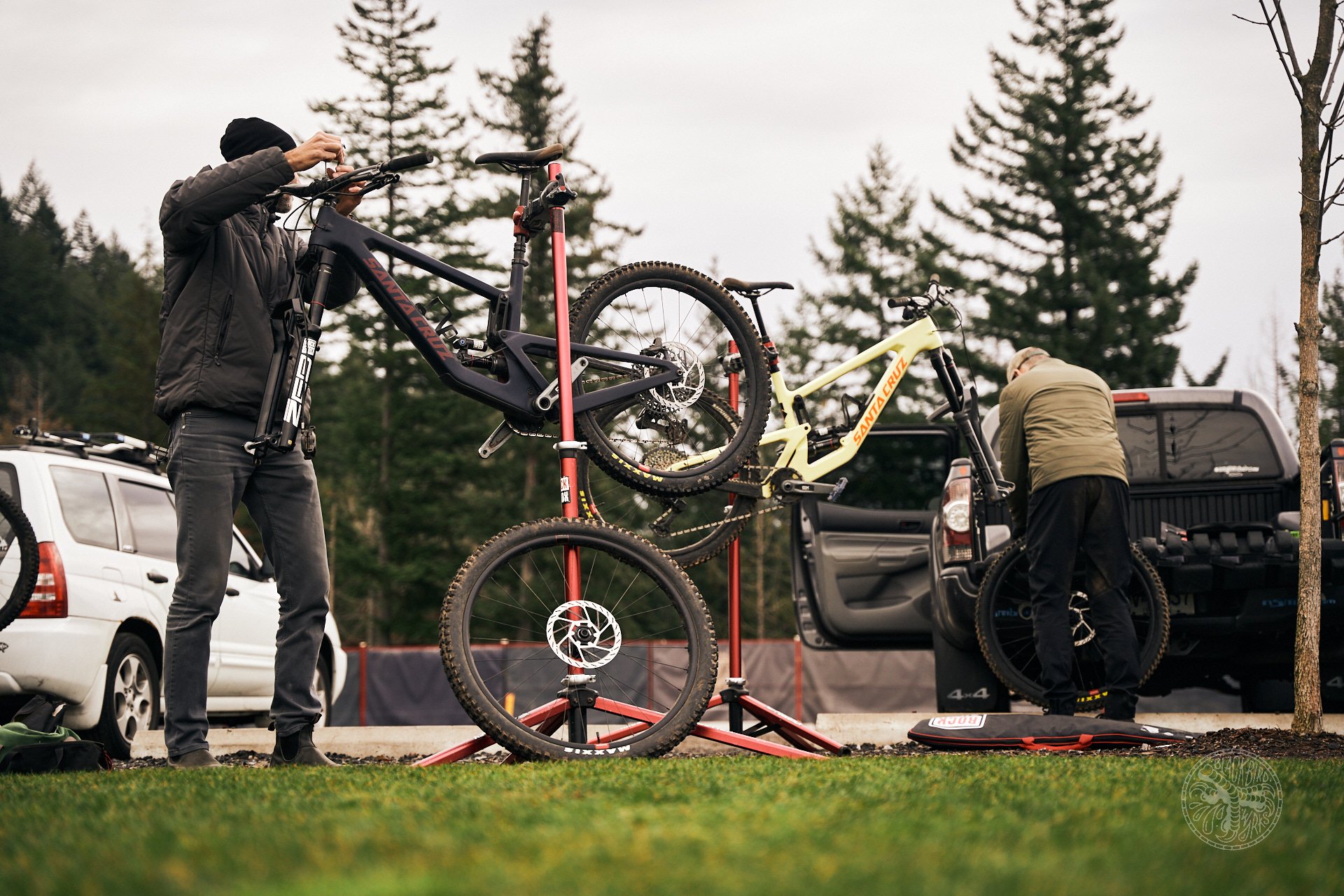
Chris Mandell of SRAM, on the tools.
Going down, the bike felt pleasantly forgiving. As I thought about it, perhaps too forgiving? How am I going to sense anything within all of that plush travel? My shakedown lap wasn’t nearly enough to challenge this bike, but once the trail opened up a bit, there was fun to be had. I’d love to do some back-to-backs with a Megatower, but the Nomad wasn’t too far off what I remembered about that bike.
For settings I mostly went straight to the Santa Cruz setup guide as a starting point:
Fork – 70 psi, Rebound 9 Clicks from closed, LSC -2 clicks, HSC middle, no tokens
Shock – 200 psi, LSC Middle
Shock rebound was my only real deviation. The adjuster knob is a real pain to get at on the Nomad (all tucked in there under a little mud fender), so I just gave it an extra click or two from where it was set and called it a day. This proved to be 13 clicks from closed, which sounds pretty quick to me, but was fine.
For the terrain I was riding, the fork was fine and these were my settings for the entirety of the test. I was using up to around 95% travel each test lap and never experienced a bottom. I would likely experiment with going a bit firmer or inserting a token if I was running this fork long term.
The shock was way too soft. After my shakedown and before our first lap the morning of the test we bumped the pressure all the way up to 225 psi. This put me closer to the correct sag range and was much closer to correct. Again, this put me at a place where I was hitting 95% travel each test lap, without experiencing bottom.
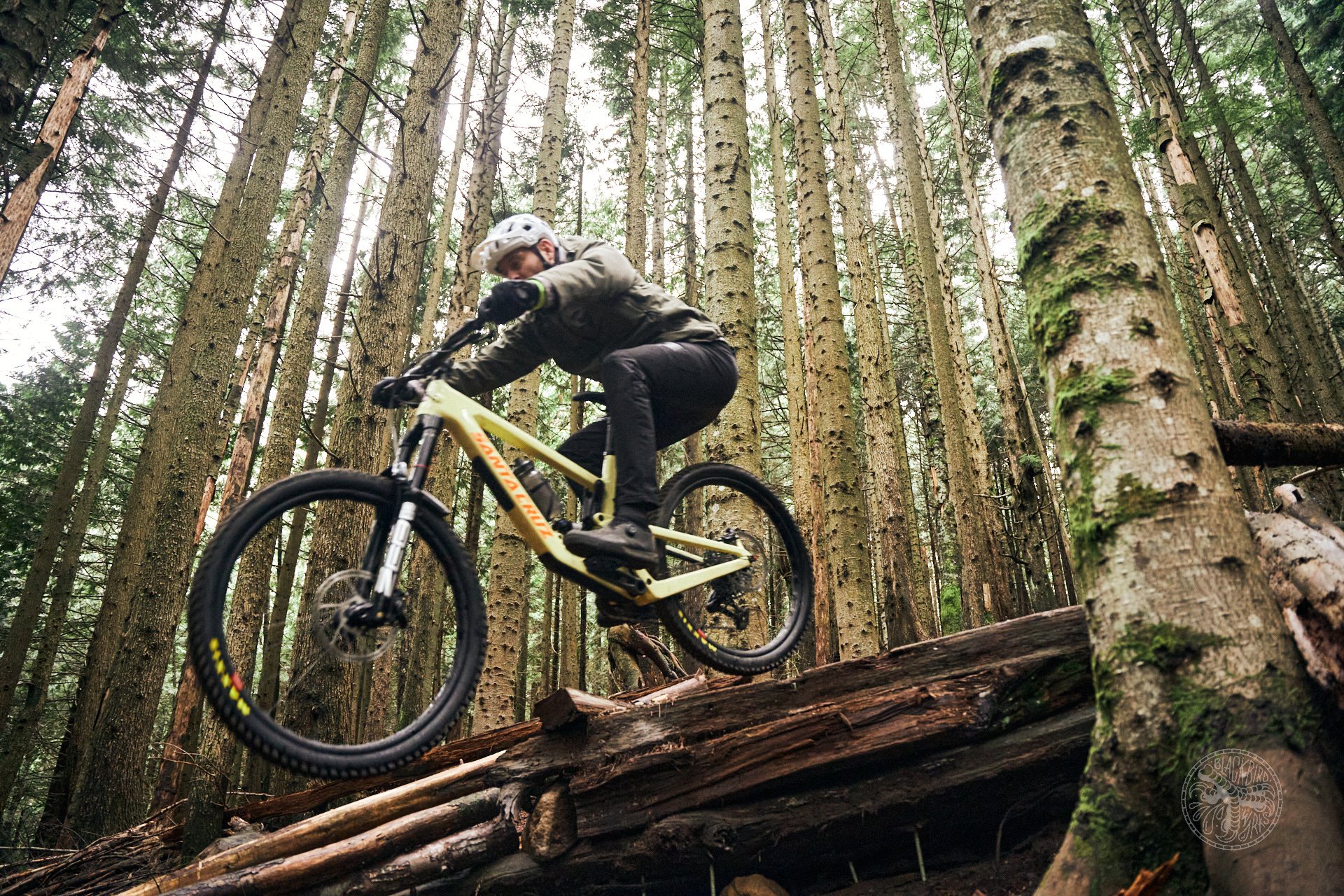
Uncle Dave.
First Laps
You never know what you’re going to get for weather on a Vancouver November day. Rolling into the parking lot all I could think about were all of the nice, warm riding clothes that I had left behind at home. As the snowflakes hit the windshield on the drive to the top, it felt more like a day of survival than of searching for minor differences in feeling from a suspension fork. It was pointed out later on that Buttercups are far less sensitive in cold temperatures, as well. So, wins all around, really.
Once rolling though, the day improved. There was a bit of moisture in the trails, but far less than the sky suggested. The trail itself was a new one for me, and was just about perfect for our purposes. It was smooth enough to allow for us to keep our speeds up a little bit, but with sections full of lots of small little repetitive bumps. There were some steeper bits and some flatter bits, some drops and some jumps. It was not a bad little trail to hit over and over and over again.
Along with the bikes and the trails came Chris Mandell from SRAM. In a previous life, Chris spent a lot of time testing suspension settings. He had some great advice for those of us testing suspension:
- Don’t ride over your head
- Be as consistent as possible
- Repeat and minimize variables
There were a few more pieces of advice, but I’ve forgotten them. Besides his wisdom, Chris was there to guide us through our test, answer all of our questions and ensure that things ran smoothly.
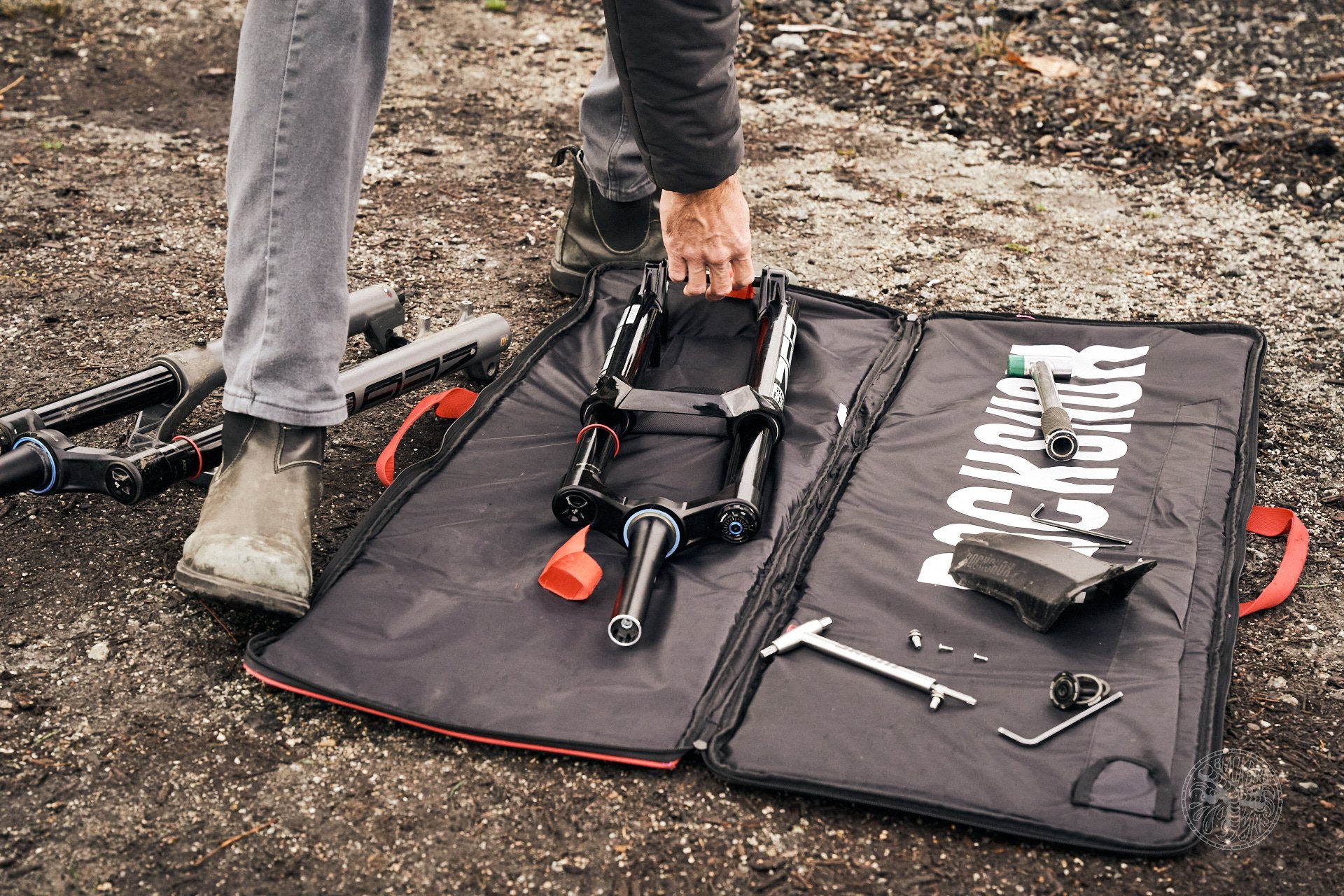
Dave rode two identical seeming Zeb Ultimates, only on the inside one had ButterCups and the other did not.
Bike #1
The first bike was the bike from my shakedown ride, albeit with a new fork and more pressure in the rear, as described above. The first lap wound up being a sighting lap, more than anything, so we went around for a second lap on the same bike, to get a better feel for how it rode.
Under these conditions, the Nomad is a bike that I would happily ride all day, every day. By the second lap I was super comfortable, and happily riding at 90% of my typical pace. This felt like as solid a baseline as I could ask for in order to make a comparison.
Bike #2
Like a formula 1 pit crew, Chris had the second Nomad swapped over with my pedals and settings and we were back to the top. I pedaled around in a few circles and bounced on the suspension a few times. “How different is this going to feel? Major difference, or subtle?” Chris shrugged his shoulders. He admitted that even he didn’t know which fork was which, because he didn’t want to influence the findings. I pedaled into the trail fairly worried that I wasn’t going to be able to sense any difference.
Upon my wheel touching down after the first little jump, ten feet into the trail, I was no longer worried, and could feel that something was different. A few seconds after that I was mostly convinced this was the Buttercup bike. I couldn’t quite put my finger on the word, but Deniz provided me with “muted”, and that fit perfectly. Everything was just a bit less jarring, and a bit softer. I felt less through my hands and my forearms. I felt a bit more in control. In order to feel the difference between the two bikes I was expecting to have to really concentrate on the portions of the trail where I the buttercups are supposed to shine, but to me the fork felt quite different everywhere. Once I told these things to Chris he admitted that it usually isn’t a subtle change for most of their testers.
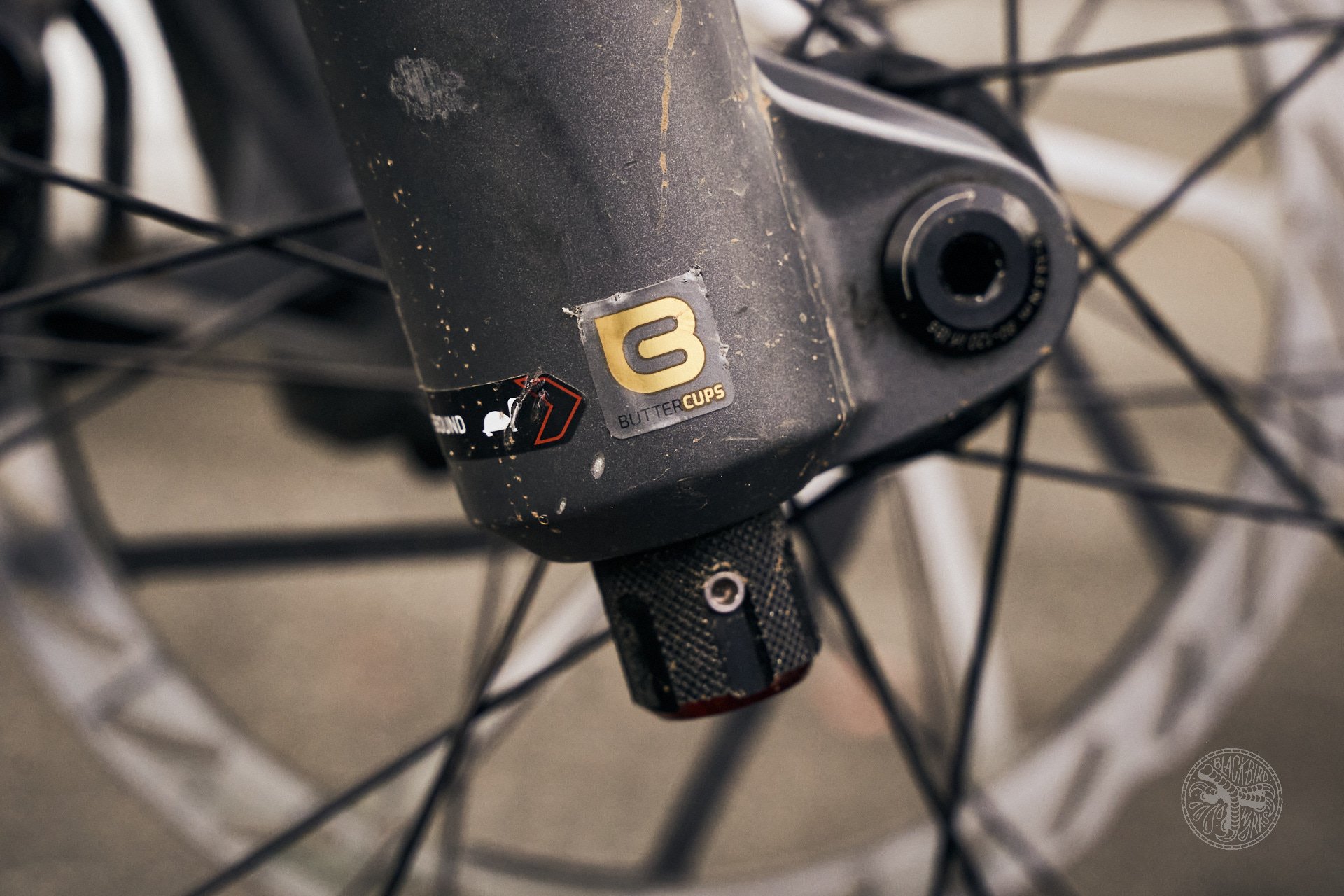
There was a 50% chance this sticker was accurate.
Back to Bike #1
Having determined that there was a change in feeling and that it was noticeable, the next few laps were spent trying to hone in on exactly what was happening, and where. We moved back to Bike #1 to see what it would feel like reversing the change. My angst returned when things didn’t feel noticeably different. Nothing felt overly harsh. Had the change to Bike #2 been all in my mind?
Then, about halfway down the run I realized that while my brain didn’t scream at me that something was different, this run felt terrible! My hands and forearms were starting to feel tired. I was braking harder and I was standing up more into the corners. It felt like all of my mistakes were compounding. My harder braking was slowing me down, causing bumps to be more noticeable, resulting in more hand and arm fatigue, causing me to brake harder. It was difficult to feel a difference over any one set of bumps, but the sum total of the run told the story.
Back to Bike #2
For the final lap of the day, it was back onto Bike #2. Again, the first few turns didn’t feel unusual to me. There were no new feelings to wrap my head around and everything felt familiar. I think that I had swapped back and forth so many times between the bikes that I was past the point where I could easily pick up on small changes. Like 2 different pairs of well worn shoes, they both felt familiar to me, even though they were different. It was harder to pick out those really small differences.
However, when I got down to the point on the trail when I really started to notice my hand and forearm fatigue on the previous lap, it wasn’t there. And then when I hit the flatter, faster, bumpier bits where I thought I would really notice the Buttercups, I most definitely did. There was a noticeable reduction in the small spikes my hands felt through terrain like this. Further down on the trail there were some faster berms with braking bumps leading into them. Again, the bike was smoother and more composed. It was easier to ride faster.
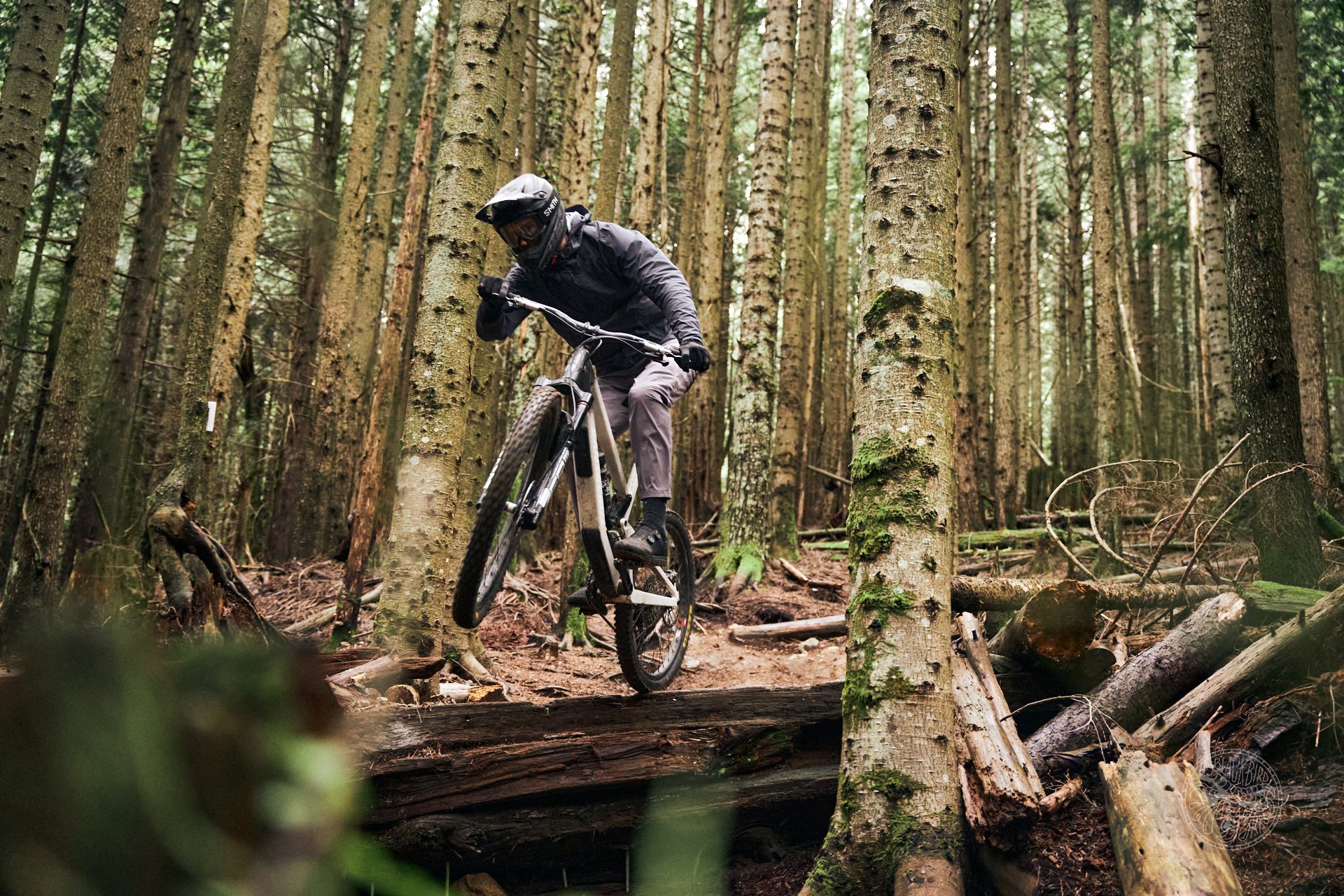
Chris Mandell at work.
What the hell is going on here?
If you look back to the article that got me into all of this trouble, you’ll note that the premise is along the lines of “how did SRAM convince everybody that a couple of rubber pucks is an important advancement in suspension design?” Now, my thoughts are similar, but more along the lines of “how in the hell can a couple of small rubber pucks feel so noticeably different?” I hummed and hawed and made a few excuses when this idea was pitched to me, largely because I didn’t think I’d be able to tell the difference and I thought that might make me look like a bit of an idiot. I was a bit shocked that this wasn’t the case. For the telling the difference part, anyhow.
Now, while I was able to feel a difference between two identical bikes on back-to-back runs, this feels like a good time to throw out some caveats. Does this mean that you should throw your non Buttercup equipped fork in the trash? Are you immediately going to ride better once you have your Buttercups installed? I would say no to both of those questions. I was very happy riding the non-Buttercup bike for the first 2 runs. It took a very specific experience to be able to feel the difference between the 2 bikes. That said, if given the choice between Bike #1 and Bike #2, I would easily choose Bike #2 (and I have video proof that I, with absolute certainty, called this out correctly as the Buttercup bike).
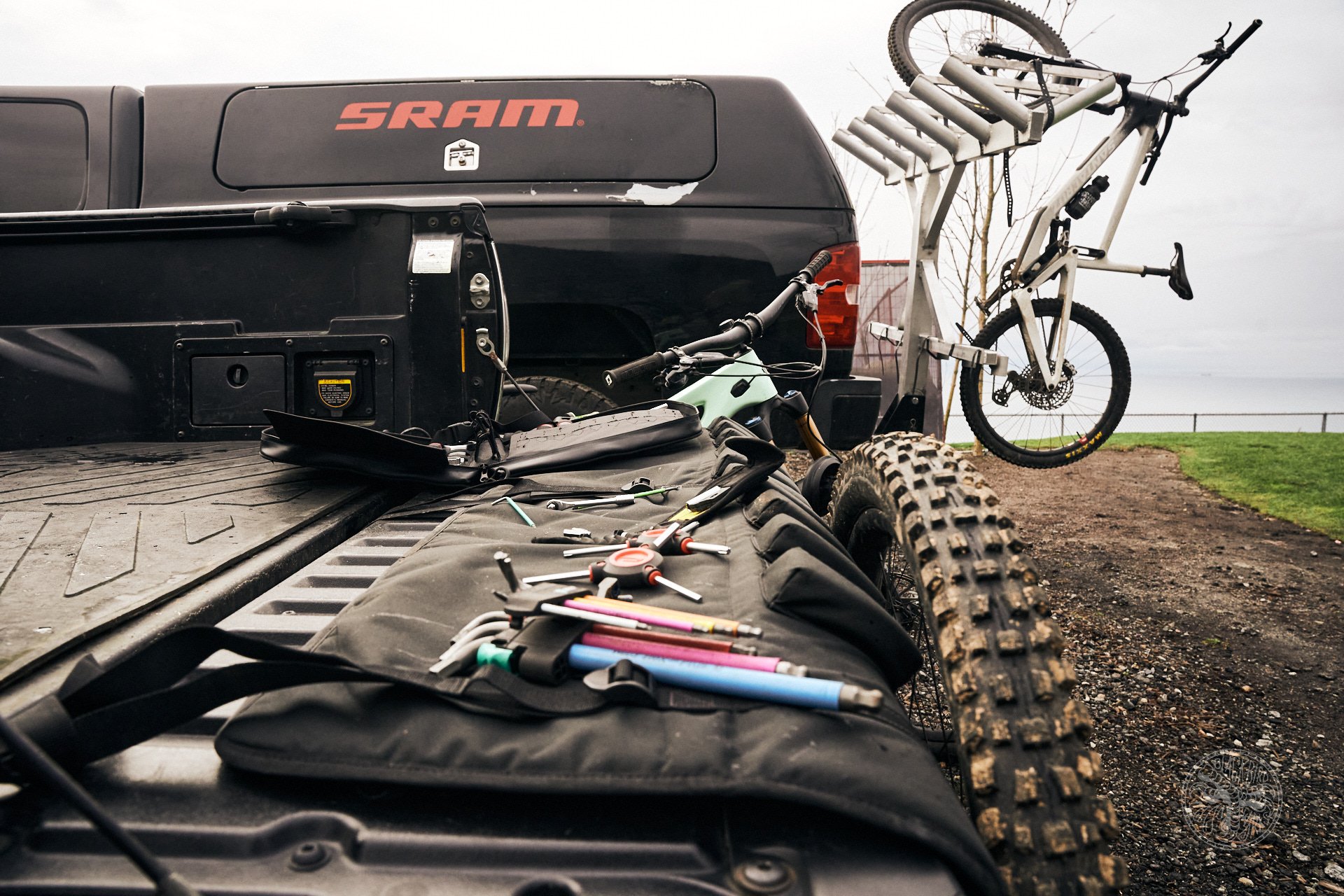
The SRAM monster shuttle truck helping with science.
I’m less certain that I would have been able to make this call without immediately riding the trails back-to-back on two well tuned and identically set up bicycles. If forced permanently to the non-Buttercup bike, it likely would only take me another run or two to adapt back to it. Yes, I think that at the end of a long ride I would feel like I had ridden more smoothly and wound up less fatigued if I had Bike #2 (the Buttercup bike, that is). It was a noticeable improvement, but fairly special circumstances were required to feel it with absolute certainty.
Still, it can’t be discounted that I could feel the Buttercups and they were better. Further to that, the fork felt better in most areas, not just in the small, high frequency bumps SRAM spent so much time talking about. To try to wrap my brain around why this is, I went back to this technology story that SRAM told, and this graph in particular, to see if I could understand what I was feeling.
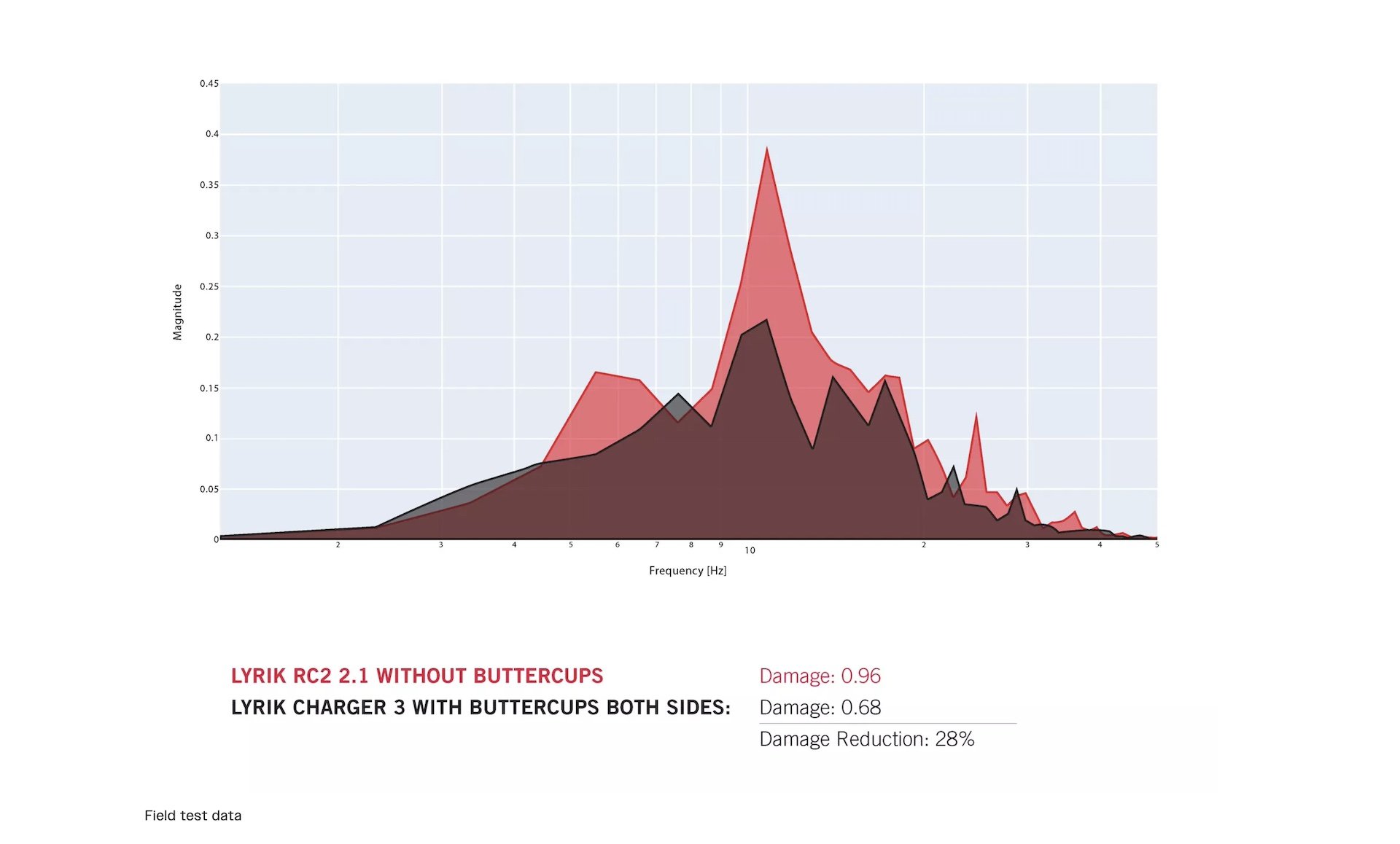
It also feels worth looking at this graph of force vs. shaft velocity.
This didn't really do it for me, though. This doesn't go far enough towards explaining the feeling. When I pressed Chris on this he told me that what I am experiencing is what RockShox has been referring to as "touchdown" - that feeling of your suspension in the first percentage of travel - which has been an area of focus for them in both the front and the back. I was hoping there was some magical little graph that RockShox could produce to show me exactly what I was feeling, but I guess that will have to wait until the next article.
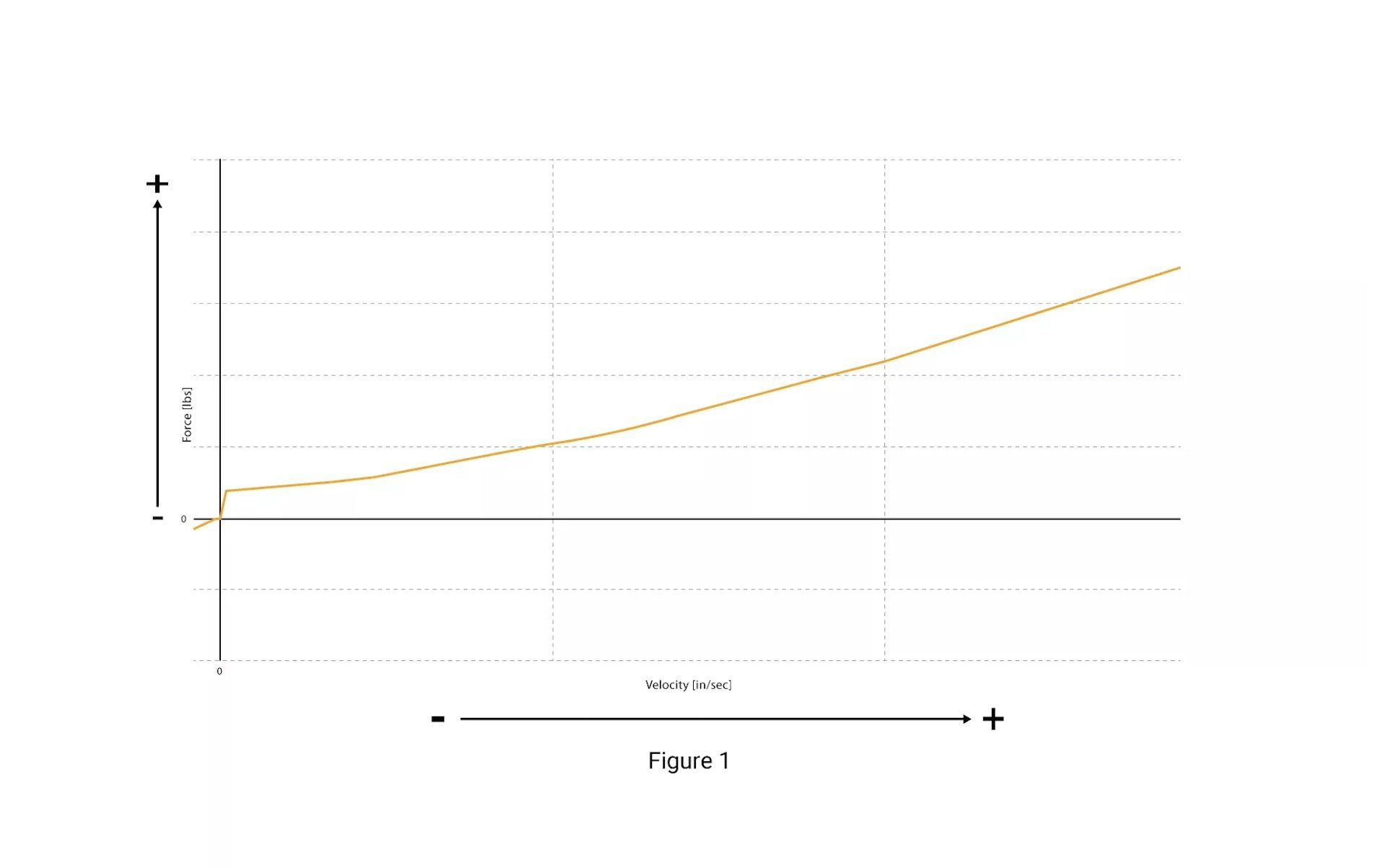
Anybody familiar with this type of graph recognizes that little spike of force as the shaft speed moves from zero velocity. Could that be the magic of Buttercups? The Buttercup eats a bit of that force spike?
In Conclusion
To avoid the mis-interpretations I feel I'm creating recently with most of my articles recently, I thought I'd write a clear, simple, concise summary of all that has come to this point. My biggest takeaway from this whole process is that I likely need to do a lot more controlled testing of various products. It was really cool to be able to isolate one tiny little thing on a bike and feel the difference that it made. It showed me that all of these little refinements likely add up to improvements in our cycling experience. It also showed me that we're incredibly adaptable things, us humans, and that we get used to things very, very quickly.
I don't actually know if the above discovery is a good thing or a bad thing. I'm happy that I was able to feel a difference between the forks. I'm a bit sad that I'm reinforcing that the latest and greatest thing might actually be the latest and greatest thing. I'm confused by what this means for all of you, and your hard earned dollars.
Frickin' SRAM marketing department strikes again!
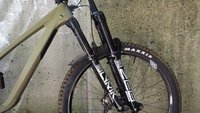

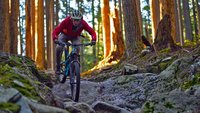
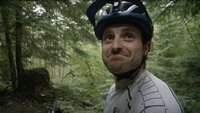







Comments
Cam McRae
2 months, 2 weeks ago
Something I didn’t realize until recently is that Buttercups works on both compression and rebound strokes. Pretty cool
Reply
Flagrant_Mechanic
2 months, 2 weeks ago
That's a very pretty graph showing the "damage" comparison with and without B-cups by vibration frequency.
(puts on nerd goggles)--
It's a bit unclear how they came up with the damage figure. You'd have to know the thresholds for actual body tissue damage; did they find and use something like that? Seems unlikely, and if not, my guess from the look of the graph is they just used the instrumentation to measure vibration intensity by frequency, and then got a "total damage" figure from the area under the graph.
That's definitely easier, and does give some kind of comparison, but without thresholds we have no idea if the vibe levels at various frequencies are actually harmful or not. ISO standards for things like power tools and hand damage weight this kind of data heavily by frequency-- vibration within 8-16Hz is the worst; outside that range much less of a problem, but the chart covers frequencies from 0-50Hz.
If the chart curves are the result of using those weightings, that would be really cool. It'd mean the chart of straight up vibration intensity, before considering damage weightings, would have a huge dip in the danger area where they'd tuned the B-cups to absorb it, and we'd all be even more impressed by Rockshox's engineers.
Oh, and did you spot the math bobble in that chart? It says damage 0.68 vs 0.96, so damage reduction of 96-68= "28%". From the numbers it's actually a reduction of 0.28 units from 0.96, which is 29%. Surprised they missed that as it's in their favour.
(tosses nerd goggles in disgust)
By the way, Spank have a great online white paper covering THEIR approach to stopping harmful vibes--at the handlebar. Lots of juicy graphs. Of course if the B-cups work as claimed then they affect the whole bike, not just the hands as bars do.
Ride on.
Reply
JT
2 months, 2 weeks ago
That is probably the best CAD render I've ever seen. Kudos on that alone.
Reply
Friday
2 months, 2 weeks ago
Wait till they find out about coil springs!
Reply
fartymarty
2 months, 2 weeks ago
Yeah I loooove my cÖil forks.
Reply
Shinook
2 months, 2 weeks ago
I really wish there were more coil options, I was really sad to see Ohlins discontinue the coil in the RXF36 m.2.
Reply
fartymarty
2 months, 2 weeks ago
Ditto. The biggest issues seem to be weight (which doesn't overly matter) and getting the right springs (also a non issue if there is a decent spring calculator). I'm very happy with mine and wouldn't go back to air.
Reply
Flatted-again
2 months, 2 weeks ago
For the spring rate part, I’d love to see something like sprindex’s coil implemented in a fork, maybe with the adjusment dial in the cap. You’d still have to be within a range of the correct spring rate, though
Reply
Fat_Tony_NJ
2 months, 2 weeks ago
Didn't the old RS Psylo have a version of that system, or was it only travel that adjusted via the (plastic!) cap?
Reply
Dave Tolnai
2 months, 2 weeks ago
Uturn did both! It shortened both travel and the effective spring length, making both the axle-crown length shorter and the spring rate stiffer.
Fat_Tony_NJ
2 months, 2 weeks ago
Thanks Dave. I had one of those, 22-23 years ago, on a Catamount URT bike. Shit, I'm old.
JT
2 months, 2 weeks ago
Like what DT uses that they had to license the design from?
Reply
lkubica
2 months, 1 week ago
The new Fox 38 air spring is very close to coil, you can find a very interesting plot of spring force on PB (sorry), which is very inline with the plot from RS :) This plot shows that RS Debonair+ has a lot more breakaway force than new Fox spring from 38s. So the RS is really fixing their inferior air spring design with those buttercups. Honestly, they have great marketing though, they made a failure into a feature, hats off to them.
Reply
Allen Lloyd
2 months, 2 weeks ago
Back to back testing is the best testing. Years ago I was buying my first full suspension bike. I lived in a city and every shop allowed parking lot tests. Completely useless for a full suspension mountain bike. I ended up traveling to a bike shop in rural Pennsylvania (Speedgoat owned by Chris Currie.) They had a short XC loop across the street and I spent an entire day riding bikes around this .7 mile loop. After each loop I would tell Chris what I thought and he would grab another bike and send me back out. I remember really wanting to like an Ellsworth but every time I rode it I came back in bitching up a storm. At the end of the day I landed on a Santa Cruz Superlight that I absolutely adored for years.
I learned more about bikes that day than the rest of my days on this planet combined. I can't remember the exact bike, but there was one that Chris sent me out twice with the exact same settings. I came back in and had similar but not exact gripes. He laughed at me and explained that nothing had changed. No offense to any other bikeshops, but Speedgoat was the best shop I ever visited and I miss walking into a small building in a tiny town and being surrounded by the most wonderful mix of custom built bikes. Or maybe it was just he pie shop across the street that gives me rose colored memories of that place.
Reply
Cam McRae
2 months, 2 weeks ago
Chris Mandell has a lot to say about setting up suspension - even for Joe consumer rather than just the enthusiasts that make up most of our audience. One important strategy is to do your own back to back testing by riding a short loop over and over while making small adjustments. Another, to help riders learn how the dials influence performance, is to try the same loop and max a single knob in one direction and then the other. I admit that in the past I haven’t been as methodical as I should be but I’m getting better and my riding and testing is improving as a result.
Reply
Allen Lloyd
2 months, 2 weeks ago
Full disclosure, I bought a coil shock 2 years ago and have never touched it since installing. My fork has the same settings as when I bought it 7 years ago. When I used to race cars it was a constant fiddle to get setup just right. Mountain bikes I am the polar opposite get it close and send it.
That said I have a local suspension guru who I plan to use next time I buy a bike.
Where I have done back to back testing recently is when Pivot brings their demo fleet to town. We do the exact same loop on each bike and look at times. Biggest takeaway was the Firebird clibs just as well as the Switchblade and Trail 429. BUT the bird is so much faster going downhill. Then the XL was faster then the L downhill. Test course is fireroad to singletrack climb followed by tech trail to flow trail. It is an almost perfect mix of stuff in 5 miles with 1,000 feet of climbing.
Reply
Cr4w
2 months, 2 weeks ago
I got a lot of new gear in 2023 and I did a lot of this kind of testing - pull all the dials in the middle and do a lap, then to one extreme and do a lap and then the other extreme. It was incredibly insightful. I'd go to Fromme and lap Bobsled and Floppy until things felt good then take it all further afield. A really good way to get comfortable on new gear and figuring out the range of each adjustment. And for identifying a couple of faulty bits too that had to go back to warranty - like, shouldn't this dial actually do something?
Reply
Pete Roggeman
2 months, 2 weeks ago
In a perfect world, that's the only way anyone would ever buy a mtn bike. Sounds amazing.
Reply
BarryW
2 months, 2 weeks ago
I know right? Sounds like the best bike buying experience ever.
If I'm recalling correctly i believe you can demo any Trek for a full 24 hours for about $100USD and get that money put towards your purchase. Even multiple days of doing that. Seems like a pretty cool way to let people demo for real.
Reply
Onawalk
2 months, 2 weeks ago
A full 24 hours seems a bit much, youre prolly gonna ride for 4.
Loads of bike shops have a demo program, lots dont advertize it.
Transition has a pretty good one as well.
When I bought my V1 Sentinel, I went on 8 different demo rides of bikes I was interested in, most didnt even bother to charge me, cause I brought the bike back clean. Its how I avoided buying a Megatower LT, I went with purchase price in hand, and the shop talked me into a demo ride. I did not get along with that bike...
Reply
Moritz Haager
2 months, 2 weeks ago
I really, really wish this was how most bike shops operate. Have a fleet of test bikes, and a test loop to try them on. I‘d be willing to pay a premium for that service to help find the perfect bike.
Reply
Lu Kz
2 months, 2 weeks ago
Four dudes roll up to a parking lot in the Sea to Sky corridor with pickup trucks loaded with three Santa Cruzes and a Yeti, and then proceed to set up bike stands and tear into the bikes right there in the parking lot.
I feel like there's a joke here, I'm just not quite able to form it.
Reply
Velocipedestrian
2 months, 2 weeks ago
Great stuff Dave, doing the Nerds Work is a worthy endeavour.
Reply
ackshunW
2 months, 2 weeks ago
I reaaaally thought there was going to be a twist at the end, like the one you liked better was WITHOUT Buttercups. Nothing against rockshox, love their stuff. Just appreciate a good story and I thought I was reading some foreshadowing between the lines. OH WELL!!
Reply
mtmc99
2 months, 2 weeks ago
Great article. Glad someone finally did some blind back to back testing to have a look at this.
By the sounds of it:
was it world changing: no
did it have an overall positive effect: yes
Reply
Cam McRae
2 months, 2 weeks ago
An interesting element to this testing was that it was cold - as evidenced by the snow in the cover shot. SRAM engineers confirmed that buttercups aren’t as effective in the cold (without providing any quantitative data) so for normal operating temps the difference should be more pronounced.
I also missed an element of buttercups functionality until recently seeing a gif. I assumed it worked under compression but it is also functional during rebound. I’ll try and post the gif here.
Reply
Onawalk
2 months, 2 weeks ago
but once moving, there should be quite a bit of heat added to the system through friction, and compression. You would think that these buttercups experience more movement than almost any other part in the system, outside of the main seals. So 2 minutes into the ride I'd expect them to be in an operating temp range.
What about on the other side, do riders in Arizona, or Okanagan summers experience Buttercups that are essentially out of range due to heat?
This seems anecdotal at best, and likely why RS cant really provide data on it.
Working under compression and rebound makes sense.
Reply
Cam McRae
2 months, 2 weeks ago
Indeed I was hoping for more data on this but none was forthcoming.
Reply
JT
2 months, 2 weeks ago
As an engineer, you find the material that works best/most consistently across the range of intended use and run with it. Not that I'm an engineer, but I ride with a few of em. Definitely not the levels of absorption that were going on in elastomer sprung forks back in the day, but it'd be interesting to see how this material lasts going from cold-heat-cold cycles.
Reply
Timer
2 months, 2 weeks ago
More relevant than optimal temperature range would probably be the optimal rider weight. Buttercups only come in one spring rate so the effect will be smaller for light riders. For heavy riders, depending on how far away from the design weight they are, the effect could be stronger or weaker.
Reply
Cam McRae
2 months, 2 weeks ago
I have spoken to SRAM about this and the response I got was that weight is not critical and that Buttercups respond to specific frequencies, independently of rider weight. This is why (SRAM told me) they don't make them in multiple spring weights.
Reply
Flagrant_Mechanic
2 months, 2 weeks ago
There's a range of up-down movement in an mtb that we're interested in here: there's the comparatively slow movement of bike + rider compressing and rebounding-- what you get in a parking lot bounce test-- and then the much faster modes of vibration from trail chatter.
The first (slow) kind is what we tune for when setting spring rate. We can suck up really slow impacts to some extent with arms and legs. The suspension helps there, but starts to really shine at sucking up slightly faster hits we can't react quickly enough to with our muscles.
But as the impacts get faster still, the suspension starts not being able to suck up all the energy-- what with mass, stiction, and damping speed limits, it just can't respond fast enough and so the really fast trail chatter can make it to your body nearly unfiltered by the suspension. At that point the soft parts of your body act like an elastomer and start to suck up the sharp spikes, acting like both spring and damper for the energy. The bones act like shock linkages, sprung by things like ligaments and tendons, but also damped by same, as well as by fluids/blood vessels, plus nerves, muscle, and fat.
Mostly your body is pretty good at that, but over time and with high intensity exposure, it starts to accumulate some damage that can last beyond the ride recovery period. A peculiarity is that it's the smaller, lighter bits that do the most absorbing-- their vibration modes are higher frequency than the bigger bits-- so things like tiny blood-filled capillaries and fine nerves stand to take comparatively greater damage. That's what we see in folks that run poorly damped power toys like chainsaws a lot.
That's where tires, wheels, grips, shoe soles, and indeed Buttercups have a role, and that's why your weight doesn't really matter much.
Reply
Shinook
2 months, 2 weeks ago
The thing I have always had a hard time wrapping my head around with this is just how much friction exists between the lowers and stanchions in comparison to what they claim these do.
For Buttercups to do anything, these must move or be moving, but the amount of force it took (at least on the two I had) seems like a lot more than what it would take to compress the cups. It struck me as though it was possible it was negating some of the impact of friction in the airspring or damper when larger compressions were made, but getting them to move to absorb vibration alone seemed really unlikely. In other words, they damp existing compressions when hits are made, but otherwise can't do much on their own.
I guess I've always been skeptical of the claim, because my experiences with both the Lyrik and Zeb were so profoundly negative, the Zeb in particular, but there is also a lot more going on with that than just Buttercups. I suppose there is a possibility for there to be enough force to move the lowers across the stanchions, but not enough to compress the air spring and/or damper, which is where these might come in. Reading this makes me overall less skeptical that they aren't doing anything, but doesn't really resolve my skepticism that they are solving the problem they claim they are.
Either way, it's interesting you could notice a difference, I've always wanted to kindof try on my own by replacing them with an insert, but I ditched both forks. I'm really glad you did this experiment, because I've long wondered what it would feel like. I'm hyper sensitive to vibrations, as I have nerve problems in both arms and hands that make it obvious when things aren't working for me. I tried both of these forks and was left disappointed compared to forks like those offered by Manitou or Ohlins. Neither of them tracked as well and they both aggravated my issues profoundly, so even if they are working and doing something, I'm not sure in my experience they really fix issues I have with either of them, it just makes them slightly less worse.
Reply
BarryW
2 months, 2 weeks ago
This also agrees with my logic of how it works. And although this testing seems to prove 'something' is happening it feels hard to imagine that these aren't doing what a tire does. A tire literally reduces the small impacts through it's air suspension.
I'm looking at putting a coil fork on my bike (the Marzocchi Z1 coil is only $379USD right now for reference) so I'm looking for more small bump compliance myself.
Thanks though for the real world testing. MTB seems to lack this type of A-B, blind (if possible of course) testing. So it's refreshing to see it done and not surprising its the NSMB crew doing it.
Reply
Dave Tolnai
2 months, 2 weeks ago
You have to remember it's not just one seal that you're overcoming though. You have your main seals, and then all of the internal seals on your air spring, plus in the damper, and not to mention your air piston. And don't forget you're adding a spring in series, which does some interesting things to your spring rate calculation, as well. And then...let's not forget static vs kinetic friction...so interesting things happen when you allow something to start moving that tiny bit sooner.
Reply
Shinook
2 months, 2 weeks ago
@Dave : yes, of course. Sorry if I wasn't clear: I was considering friction with the lowers disconnected from the damper/spring rods. In order for these to do anything, that's what would have to be overcome. It felt like more friction than these vibrations they claim are moving the fork would be able to overcome. This would purely be the bushings and wiper seals.
Whether that is a gap between "able to move the lowers" and "able to break damper/spring/etc seals", that's where I would suspect they come into play, if they do anything.
Reply
werewolflotion
2 months, 2 weeks ago
This comment has been removed.
Andy Eunson
2 months, 1 week ago
So Dave, would it be correct to state that buttercups are more of a comfort feature than a performance feature? Not that more comfort can’t equal better performance.
Reply
Mike McArthur
2 months, 1 week ago
I perform better with less arm pump, so there's that. One gets to decide of more weight lifting or throwing $$ at suspension is the fit.
Reply
Distrakted
2 months, 2 weeks ago
To touch upon your question as to whether having acute perception is a good or bad thing, that depends. Finding magic in things like listening to a diamond being drug around a plastic spiral or getting lost in a nice bottle of Burgundy can be other worldly but the chase can also be exhausting. Sometimes I envy my friends who are perfectly content with listening to music through their smartphone or thinking about fermented grape juice in terms of red or white.
Reply
Dave Tolnai
2 months, 2 weeks ago
Interesting comment.
Probably the most training/experience that I have with formalized testing is with beer. There are whole systems set up to be able to taste and isolate various compounds in beer. You start with a known reference beer, drop in your calibrated flavour tablet, and then complete blind tasting to see if you can spot 1 of 20-30 different attributes within that beer. The interesting thing is how different people are super sensitive to particular flavour compounds. I can't stand the slightest bit of diacetyl in my beer, for example. Other flavours I couldn't spot for the life of me.
I think bicycles are the same. Some are particularly susceptible to tires, others have other particular needs. Heading into this, I was concerned I wouldn't be able to pick up much nuance in the fork. I tend to be able to handle a lot from a fork, as long as it doesn't feel horrible. This made me realize that probably wasn't exactly the case, but at the same time, the feelings are fleeting.
Reply
Velocipedestrian
2 months, 2 weeks ago
>Finding magic in things like listening to a diamond being drug around a plastic spiral.
So good, and makes me think of Twain - using 'clumb' as the past tense of 'climb'.
Reply
bushtrucker
2 months, 2 weeks ago
Love the back to back blind test. More if these if you can please. Goes to show how hard to pick up a single change can be. And that you probably need a professional level tune to be getting the most out of the latest gear anyway.
Reply
Moritz Haager
2 months, 2 weeks ago
This is the kind of testing I would like to see more of in MTB products — blinded back to back testing. There is a very good reason that double blind randomized controlled trials are the gold standard in medicine for figuring out if something actually works. Bias is a very real and powerful thing. Unfortunately, for MTB products, it‘s generally pretty hard to do. You always know when its 2 different bikes you are testing because they look different, but this scenario was pretty cool. It would be more difficult to compare different forks (like Fox vs RS) this way — you could wrap them with vinyl to obscure graphics but most reviewers are savvy enough to tell them apart by the knobs alone I would guess.
Anyways kudos to a really well done test. It really is too bad you can‘t upgrade to buttercups on existing products.
Reply
Timer
2 months, 2 weeks ago
For shocks, blind testing should be relatively easy. Just wrap them in plastic after setup is finished.
That could conceivably work for forks as well. Or tape them up thoroughly to hide everything except stanchions.
Tires would be very interesting to blind test but there is just no way to do it.
Reply
Mark
2 months, 2 weeks ago
What about blindfolding the riders? You’d end up with truly unbiased feedback that while slightly terrifying, would definitely be entertaining.
Reply
Dave Tolnai
2 months, 2 weeks ago
Triple blind?
Reply
Timer
2 months, 1 week ago
Truly unbiased feedback about the riding characteristics from the trail entrance to the first corner.
Reply
Mark
2 months, 2 weeks ago
It would have been really interesting to have Andrew there, with Dave and Andrew swapping off the two bikes and then comparing notes in the article.
Reply
Lu Kz
2 months, 2 weeks ago
Imagine NSMB publishing photos of Mr. Major on the Nomads featured in this article. The very idea!
Reply
Cam McRae
2 months, 2 weeks ago
That was the plan from the beginning and it would indeed have been cool to see what came out of it. Unfortunately Andrew wasn’t interested in participating. I’m not sure why but obviously that’s his prerogative.
Reply
Mark
2 months, 2 weeks ago
@Cam - Damn, that's an opportunity missed for the readers.
Edit - and probably for Andrew as well.
Reply
Lu Kz
2 months, 2 weeks ago
So what you're saying is you were built up, and then let down, with the testing of the buttercups.
Reply
Cr4w
2 months, 2 weeks ago
Sounds like so many of the great but very small improvements we've enjoyed the last few years. Each one probably not quite worth upgrading just to get but if you're upgrading anyway you may as well, and when a bunch of those improvements happen in wheels, tires, frame quality/fit/geometry/kinematics, fork, shock, dropper, brakes, drivetrain and altogether is a big evolution.
Reply
XXX_er
2 months, 2 weeks ago
My 2020 Zeb might not be as plush as the old Fox 36 it replaced but I can't complain too much, my big question are there butter cups in a 2020 ZEB and if not can they be put in ??
Reply
BarryW
2 months, 2 weeks ago
No and no.
Reply
Joseph Crabtree
2 months, 2 weeks ago
No and yes
Reply
BarryW
2 months, 2 weeks ago
You can update a 2020 Zeb to have Buttercups? I thought it was noted as not being backwards compatible.
Oh, not compatible except for 2023 models. From RS.
https://support.rockshox.com/hc/en-us/articles/5931262988187-Can-I-buy-ButterCups-aftermarket-and-add-it-to-my-existing-RockShox-fork
Reply
Flagrant_Mechanic
2 months, 2 weeks ago
And also, if I read the RS site correctly, Buttercups aren't sold separately-- you have to buy the air shaft ( Zeb 2021+, Pike/Lyrik 2023+) and damper (Lyrik 2023+ at least) equipped with them.
The damper is a big cash layout, but the air shaft isn't too bad, especially if you're already changing travel. Doing just one side is approved by RS, and if their rough calculation of the buzz redux from two Buttercups is correct, then you can expect about a 14% overall reduction from doing just one side.
Wonder how much buzz redux you get from dropping 3psi tire pressure?
Reply
JT
2 months, 2 weeks ago
With proper tooling, know-how, and desire all things are possible.
Reply
tj7mesh
2 months, 2 weeks ago
Super interesting, great journalism gents, love it!
Reply
rbalicious
2 months, 2 weeks ago
Love reading about a blind back to back test like this. Well done NSMB. I've been intrigued by the addition of these in MTB application, as one of the best examples to make a comparison to: modern day chainsaws. If you have ever run a saw all day, you would be absolutely wrecked without all of the rubber pucks built into the chassis of a saw to reduce vibrations being transmitted to the user. Having ran a saw pre-puck, I can tell you, I would never want to have to operate one all day. Anyone that argues otherwise, simply hasn't worked hard labor and doesn't know how much these little devices will benefit the user. (Similar examples: motorized compactors/tampers and jackhammers.) Short of the long, well done SRAM/Rockshox for finding a way to incorporate well documented science into MTB application.
That all being said, am I rushing out to purchase new airspring & damper for my Zeb? No, not yet. But I do certainly plan to make that upgrade in the future.
Reply
lazybum
2 months, 2 weeks ago
This comment has been removed.
Onawalk
2 months, 2 weeks ago
Can I get a descriptor of each point on your scale, along with a definition, or at least a link to what you are talking about?
Like, what is 1on your scale, and please provide some background on this example
Thank You in advance
Reply
cxfahrer
2 months, 2 weeks ago
I had a friend at highschool with Hungarian roots, he was very much into everything (mostly styling himself, lost track of him). Nothing related to bicycles.
I am sure that Buttercups will work - I guess the effect you felt is there and it makes sense to put rubber grommets in a fork. But is it a magic carpet then?
There are so many factors that make a good fork, and for a specific trail and rider. If one would want to sort this out scientifically, it would be impossible. What if there was a "blind" comparison to a DVO or 38 or Öhlins, or a tuned version of any fork, or a ZEB with 2.1?
Reply
Pete Roggeman
2 months, 2 weeks ago
This was simply a chance to make good on some speculation about whether Buttercups represented a measurable difference in the feel of one specific fork RockShox makes (the Zeb). We're not claiming it's perfect nor scientific - just a fun experiment. It's not a review of a fork, just a closer look at a particular feature. Comparing to other forks is irrelevant since using BCs with them is not an option.
That doesn't mean more back to back testing (like this or between other forks) wouldn't be interesting or enlightening, just that comparisons to other forks wasn't the point of this exercise.
Reply
XXX_er
2 months, 2 weeks ago
Good artical, I'm satisfyed the compro was blind enough, I can't see any reason having a SRAM guy there would make a difference, I mean you know you are riding a ZEB with and a ZEB without so there is no need to make it any harder
I've done compros of settings on my own ski gear where i'm just comparing boot position on ski center or 2 different foot beds and I didnt need it to be completely blind to tell what i wanted to know
Reply
Cooper Quinn
2 months, 2 weeks ago
Having gone back and forth with 2.1 and Charger 3 equipped Zebs.... they're quite different on the trail.
Reply
Flagrant_Mechanic
2 months, 2 weeks ago
I'd be curious to hear your observations.
Reply
Skooks
2 months, 2 weeks ago
Which one did you prefer, and what are your thoughts on the new Charger 3?
Reply
BarryW
2 months, 2 weeks ago
That would make an interesting A-B comparison. How much difference does the damper make?
Reply
Magoo
2 months, 2 weeks ago
I am new to this website....but not new to Mtn Biking as I started riding racing XC in the mid 80's in So Cal. Got into flying RC airplanes for almost 20 years now got my first new bike since then and this one has Batteries!
Reply
Cam McRae
2 months, 2 weeks ago
Welcome aboard!
Reply
handsomedan
2 months, 2 weeks ago
Would be curious to know if a buttercup on one side would make a difference?
Reply
handsomedan
2 months, 2 weeks ago
This comment has been removed.
Magoo
2 months, 2 weeks ago
Thanks....Been riding since the mid 80's before there was even suspension...Seems to be a good site!
Reply
Brian Tuulos
2 months, 1 week ago
So...elastomer suspenion is back baby!
Reply
BarryW
2 months, 2 weeks ago
Very interesting article!
One note is that it would be interesting to have a non-SRAM employee doing the fork setup. And make it actually double blind. Not claiming that there was any malfeasance, but when one person you interact with knows, it becomes only blind. And experimentally that can have a significant effect on the results.
It makes me hope you'll test out the FastFlex bars with the elastomers on them.
It also makes me suseptible to buying my wife a new fork to pursue any reduction in arm fatigue.
Dammit Uncle Dave!
Reply
Cam McRae
2 months, 2 weeks ago
Actually it ended up being double blind because once the forks were set up Chris didn’t make note of which was which and then installed them on the bikes. To find out at the end he had to remove the foot nuts from forks and peer inside.
Reply
XXX_er
2 months, 2 weeks ago
I did a similar thing comparing foot beds in a ski boot, I put a sole foot bed in one boot and a 300$ custom molded orthotic in the other boot, go skiing for the day. Except I couldn't remember which boot had which foot bed until i took the boots off, so at the end of the day no difference between a correctly chosen 50$ sole and a 300 $ custom made
Reply
WheelNut
2 months, 2 weeks ago
This is an important limitation to note for this test. The suspension manufacturer has a vested interest in proving their new technology provides a perceivable benefit. Obviously doing a test that is totally free of bias and uses off the shelf forks purchased from bike shops and a larger sample size would be VERY time intensive and expensive and outside the purview of an online MTB mag. I reckon this test is enough to establish a one more data point in the realm of product reviews, which can help us consumers.
Anyway, if the Buttercups didn't work at all I'd be pretty surprised as the basic concept is sound and has been used in automotive dampers for decades. Every suspension point is rubber mounted. If you've ever replaced some or all of those mounts with stiff polyurethane you know how much vibration they filter out.
Reply
Dave Tolnai
2 months, 2 weeks ago
I hear you on absolute separation of interests. Fact is, we wouldn't have been able to do this without assistance from SRAM. We probably could have sourced two identical bikes, and then maybe convinced a third party suspension tuner to doctor us up two Zebs...but I don't think we would have gone to all of that trouble to prove something like this.
I had quite a few interesting conversations with Chris through this process. This sort of testing is something that they do internally all the time. It's probably obvious, but they have a whole internal program for testing all of the various iterations of products before they go to market. So, for him, this was really just recreating something that they do internally all of the time, and reproducing a result that they were pretty confident in.
Reply
Please log in to leave a comment.